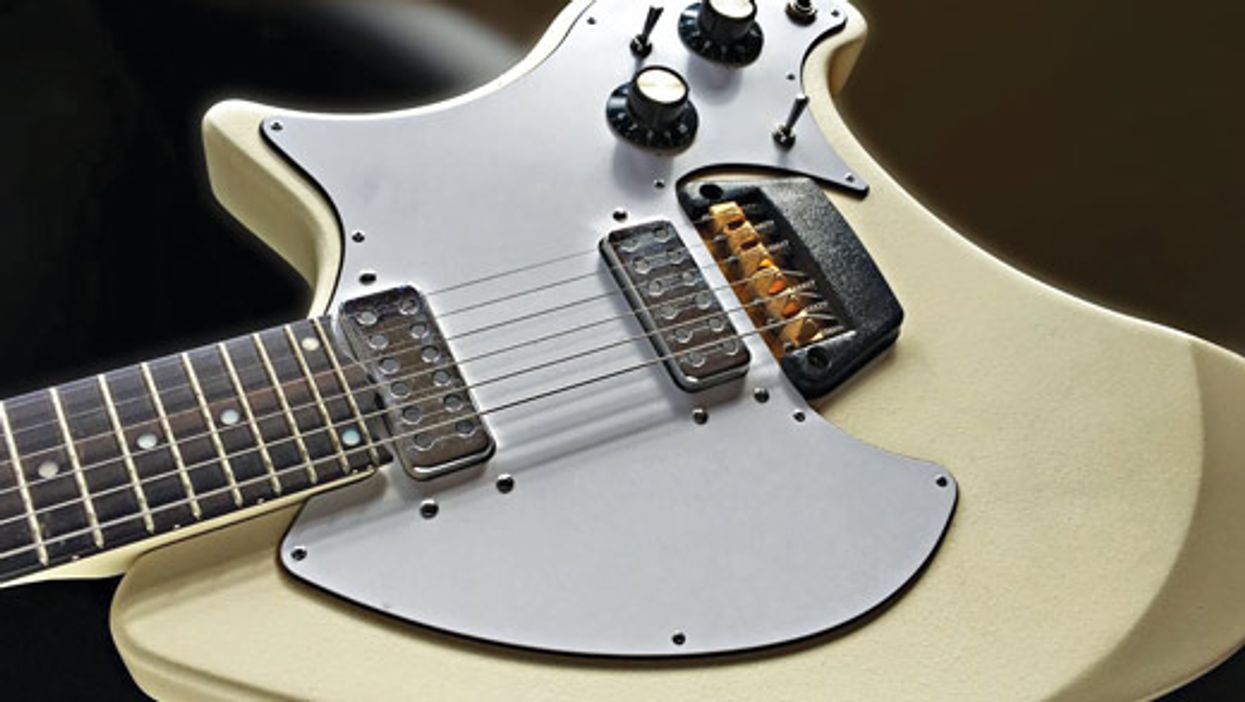You can't judge a book by its cover, but maybe you think you can assess a guitar by its name. Would you pass by an axe called the Executioner? Might you be attracted to an instrument christened the Patriot? Guitar makers are always trying to evoke some response from the git-tar-shopping public—hopefully clicking the “buy now" button. So, what's in a name, and why do builders choose ones like SR300EOFM or Breadwinner?
Perhaps you can't imagine a time when the name Les Paul meant very little to the guitar community. By the time Gibson's almost forgotten, single-cutaway Les Paul began its rise from the ashes to superstardom in the late 1960s, it had been abandoned not only by Gibson, but by many in the hip, younger crowd of rock musicians. Les Paul—the man—was pretty much ignored by the general class of longhaired rockers. Likewise was the guitar that bore his name. The LP, with its old-school violin look, was considered a quaint, antique instrument from the age of “squares" that played decidedly uncool music.
The branding problem was severe enough that Gibson scrambled to distance itself from the single-cutaway LP by redesigning it into what ultimately became the SG. Then a few years down the road—with the help of players like Mike Bloomfield and Eric Clapton—the original Les Paul overcame its mid-life stumble to become a staple of the rock pantheon despite its name. In fact, I would wager that the guitar's resurgence actually filled Lester Polsfuss' sails with the wind that carried him for the last part of his career. Today, the name Les Paul has taken on a meaning that dwarfs its origin—as important as he was.
The Les Paul story is one where an endorser's signature model lived on after the artist had lost favor with the public. That's a concern for guitar companies in general. Marketers want to cash in on an artist with high visibility or who commands the respect of other players. They are fully aware that the shelf life of a guitarist's influence may be short-lived.
the state-fair circuit?
There is also the danger of utilizing the name of someone few have heard of. How many times have you seen an advertisement featuring a guitarist from an unknown band? Do you wonder if maybe you should check out the band to determine if you like the guitar? Wow, that's a lot of work. What about endorsements by flash guitarists who had some big hits 30 years ago and have emerged from rehab to play the state-fair circuit? Do you view those endorsements as legit as someone riding the crest of today's pop-music cycle? During my time working within large music companies, marketing and sales people often spoke of finding “the next [fill in your choice artist here]" as a marketing strategy. If only it were that easy! In the meantime, corralling a bevy of artists with varying degrees of artistic or commercial currency seemed to be the backup plan.
Then there's the business of naming the products. If you aren't going to use an artist's name, any proper name will do. I like automobile racing, so I suggested a lot of names that were related to that while I was at Hamer—famous cars, racetracks, and the like. I enjoyed the reference to speed and daring, and it created continuity for the brand. I didn't always get my way, however. And notable missteps were many, I suppose, like calling a model “Sunburst" or the ultra-inspired “Archtop." I've actually received email inquiries from folks who thought they had a pre-production collectible because we'd used the name “Prototype" for an entire model range. A few of the company's models were also named after Japanese family cars while I was out of the room. (I assume this happened during a traffic jam on the way to the office.)
Sometimes companies choose names that begin with the same letter, which is something the automotive industry does as well. Other instruments receive a numerical designation, which can be construed as a nod to the military, or perhaps just to German cars. Gibson models sometimes refer somewhat obliquely to their configuration, such as the ES-125 TCD, which is obviously a thin, electric Spanish with dual pickups and perhaps a cutaway, and retailed for $125. (Don't quote me on this—I was never good at math.) Rickenbacker is a good example of a manufacturer using internal codes for model names, which is semi-ordinance-like. I once jokingly came up with “SX4U" when discussing names for a bass model, and I find it kind of surprising that it hasn't been used for an instrument that I know of—yet.
Regardless of whether a builder names its products after cities, personalities, or bill-of-material codes, there's always some method to the madness. If you study closely, you can get good at amazing your friends with your translation skills. I suppose that's half of the fun. And everyone should have a hobby.















![Rig Rundown: Russian Circles’ Mike Sullivan [2025]](https://www.premierguitar.com/media-library/youtube.jpg?id=62303631&width=1245&height=700&quality=70&coordinates=0%2C0%2C0%2C0)




